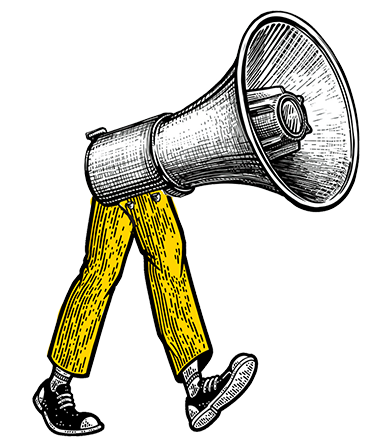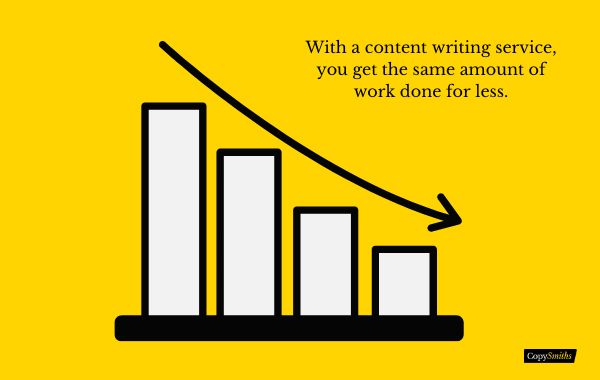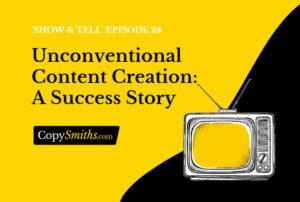Home » Content Marketing » Blogging Quality vs Quantity: Does It Really Matter?

Blogging Quality vs Quantity: Does It Really Matter?
If you’ve been running an online business, chances are that you’ve heard that content is king. If not yet, then the next digital marketing guru you follow on Instagram will mention it.
While this cliche statement is true, should you focus on the frequency of the content you post online or on its quality?
Answering this question is not easy. There’s no one-size-fits-all answer.
One stellar piece of content might not be enough to get you the results you yearn for. Conversely, you can never compromise on any content’s quality because you’re creating it for human consumers.
These two factors are quite tied together and you need to find a way to strike a balance. The frequency of posting the content is just as important as how rich it is.
Today, we look at what’s better between quality content and quantity. We’ll see what to pay more attention to, and where to draw a line.
A Quick Background
A few years ago, the winner in this contest was quantity. Everyone that wanted to attract their target audience to the blogs simply posted a bunch of shorter blog posts that weren’t of that much quality.
That was until Google released the 2011 Panda algorithm and the game changed. Tactics that were previously used by digital marketers to generate organic traffic to their blogs and websites no longer worked.
To make it worse, content marketers started getting penalised for using older tactics. Previously powerful websites started experiencing slower traffic or slowly disappeared from the face of the internet.
Thus, the content quality vs blog post quantity contention was born.
More Content or Quality Content?
To answer this question, both quality and quantity are instrumental. It all depends on serving your customers content to feed their needs.
On one hand, creating one long and high-quality blog post gives you the chance to achieve great potential. This kind of content stays evergreen for a long period. Also, having it linked by other sources considerably boosts your reputation.
“Quality content deeply understands and satisfies user intent, and encourages dwell time”
Katrina McKinnon, CopySmiths Founder
On the other hand, you may need a few days, sometimes weeks, to work on one. You’ll also need to keep updating it for it to stay relevant. Maintenance for a single long-form high-quality blog post can run for a few years.
Simply put, a lot of effort goes into a single long-form high-quality post. In the end, you’re not even assured that it’s going to perform well.
Let’s flip the coin and look at a bunch of smaller content. They can consistently bring traffic to your site and don’t require a lot of time and effort to work on. There’s also the possibility of a small blog post going viral and getting shared thousands of times on multiple platforms.
However, smaller blog posts don’t perform as remarkably as longer high-quality blog posts. While some could perform well, there must be a very special reason for them to do so.
Here’s a breakdown of the comparison between content quantity and quality blog posts:
| Quantity | Quality | |
| Pros |
|
|
| Cons |
|
|
As you can already see at this point, it’s all about striking a balance. But how do you do so?
How to Strike a Balance
Before we get to the meat itself, let’s make one thing clear: Always deliver nothing but pure value to your audience. You don’t want them to feel like they’re always wasting their time when they visit your blog. Otherwise, they’ll stop visiting and you’ll lose them.
Now that we’ve gotten that out of the way, how do you ensure you strike a balance between long high-value content and content frequency?
We’ve broken down the simple strategy into the pointers below.
What Are Your Blogging Goals?
Define why you’re publishing your blog posts and what you want to achieve through blogging. Answering this question will help you come up with a comprehensive content marketing strategy.
Blogging goals vary depending on what you want to achieve. For example, your blogging goal could be to achieve more sales, generate more traffic or get more people to sign up to your email list.
Each goal may require a different strategy. If you want to generate more sales, you’re likely to benefit more by using short-form posts.
On the flip side, if you want more signups or to grow your traffic, producing high-quality content will serve you better.
Who Is Your Target Audience?
Knowing your target audience will help you create content that suits their needs and answers their questions. Here are a few questions you can ask to guide you.
- Who are you targeting?
- What do they value?
- How do you want your content to solve their problems?
- What value can you offer them?
Again, different audiences may require different content strategies. If, for example, you run a hot-topics and news blog, the quantity will triumph over quality.
If you run a company blog that’s focused on attracting leads, you need to publish more long-form and high-quality content.
Do You Have a Content Plan?
A content plan is instrumental in helping you strike a balanced content strategy.
First, research to establish what your audience may be searching for from a blog like yours. See how you can tailor your content around their needs to provide the perfect solution.
The research will help you come up with blog post ideas that will build trust and a relationship with your audience.
Secondly, collect all the data gathered from your research and use it to craft a solid content plan. Here are three strategies that will help you in this process:
- Provide a solution for their problems: Simply create content that revolves around your audience’s problems and how to solve them.
- Provide an answer to their questions: Create blog posts that answer your readers’ questions.
- Create new content and refresh old topics: What hot and fresh topics can you write about? What old topics can you refresh to make them relevant and better?
Use one or all of the strategies above to create a comprehensive spreadsheet that you’ll use as your content plan. Review the topics and pinpoint the ones that will make good long-form high-quality content and those that will be better as short-form content.
Remember that long-form content should stay evergreen and relevant to your audience. Search for such old posts and see how you can refresh them to make them stay current.
A content agency, like CopySmiths, can help you come up with a comprehensive content strategy that will serve your goals.
Both the Quantity and the Quality of Blog Posts Matter
Pitting long-form content against blog posts with a shorter word count is looking at things from the wrong perspective. Rather, look at how both can offer different value for your business and target audience.
Strike a balance between the two by establishing what you want your blog content to help you achieve and knowing who’s your target audience. Also, coming up with a content strategy is essential in striking a balance.
CopySmiths
I'm Katrina McKinnon, founder of CopySmiths and Small Revolution. In my 20 years of experience, I have helped online businesses create high-performing content specifically on an eCommerce store's blog. Find me on LinkedIn and Twitter.

CopySmiths offers the best blog writing services for online stores.
If you'd like us to write blog articles for you, click here.
Most Recent
- 3 Bold Questions You Should Ask When Hiring A Content Writer

- 5 Practical Reasons You Should Use a Blog Post Template

- 4 Amazing Benefits of Using a Title Generator for New eCommerce Blogs

- 10 Awesome Bio Examples Your Online Store Blog Should Emulate

- 8 Basic Steps to Successful Content Development Every Time

Podcasts
Got a question?
Ask our friendly team about our article writing services.
Subscribe to CopyZine
Monthly, hand-picked stories of the best in eCommerce Content.





